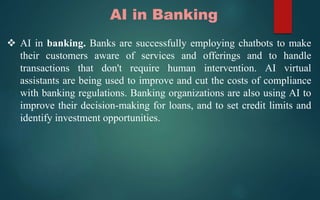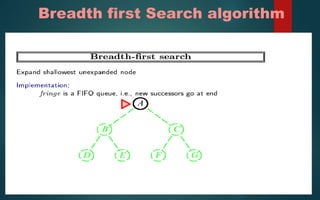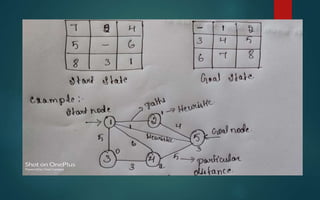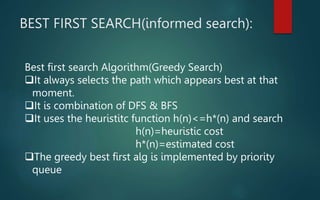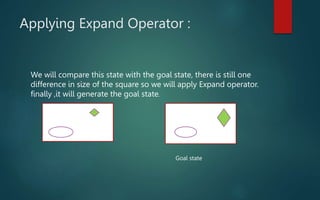The document provides a comprehensive overview of artificial intelligence (AI), including its definitions, applications, and various techniques such as heuristic search methods. It highlights the growing importance of AI across multiple sectors, including healthcare, finance, and education, as well as specific technologies that underpin AI like machine learning and deep learning. Additionally, it discusses the significance of search algorithms and their classifications, underscoring AI's capability to simulate human-like cognitive functions.
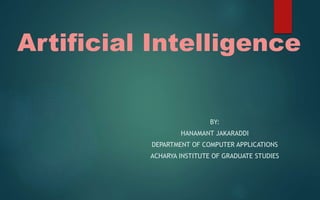

![Introduction to Artificial Intelligence
Some Definitions
AI is a technique that facilitates a machine to perform all cognitive
functions such as perceiving, learning and reasoning that are
otherwise performed by humans.
“The Science and Engineering of making intelligent machines,
especially intelligent Computer programs is Artificial intelligence” –
JOHN MC CARTHY [Father of AI]
Artificial Intelligence is a way of making a computer, a computer-
controlled robot, or a software think intelligently, in the similar
manner the intelligent humans think.
AI is accomplished by studying how human brain thinks, and how
humans learn, decide, and work while trying to solve a problem, and
then using the outcomes of this study as a basis of developing
intelligent software and systems.](https://image.slidesharecdn.com/unit-iartificialintelligence-240518100331-445adc31/85/Unit-I-Artificial-IntelligencEGTRHe-pptx-3-320.jpg)










